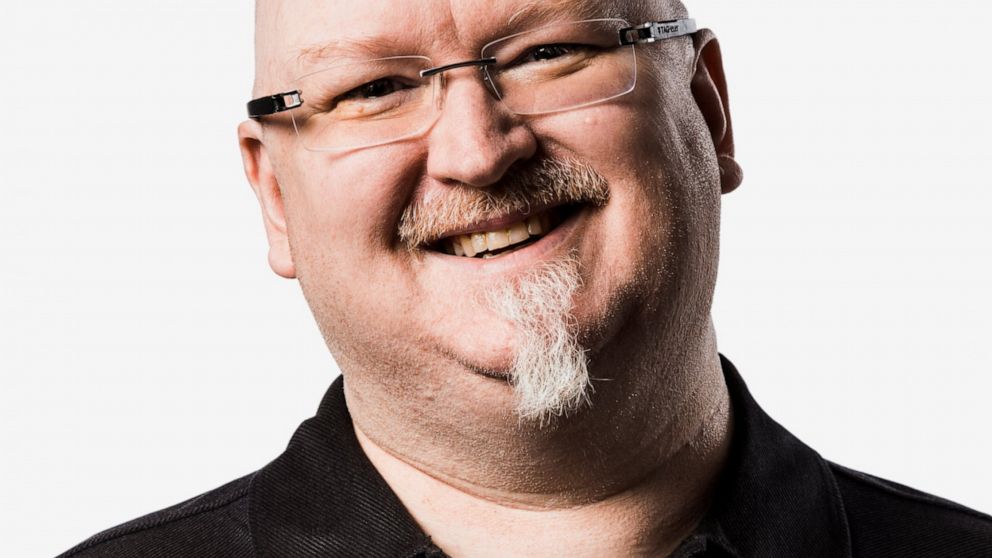Microsoft’s technology chief pivots to pandemic response
Microsoft’s chief technology officer, Kevin Scott, oversees thousands of engineers and scientists working in artificial intelligence, computer science and other research
By
MATT O’BRIEN AP Technology Writer
April 26, 2020, 3:16 PM
5 min read
5 min read
Microsoft’s chief technology officer, Kevin Scott, oversees thousands of engineers and scientists working in artificial intelligence, computer science and other research.
But right now he’s laser-focused on the COVID-19 pandemic. The latest projects include setting up a chatbot for the Centers for Disease Control and Prevention and repurposing Microsoft’s supercomputers to help in drug discovery.
He’s also out with a new book. “Reprogramming the American Dream” connects Scott’s rural upbringing in Gladys, Virginia, to his optimistic view that AI could help bridge the digital and economic divide.
Scott spoke with The Associated Press about the pandemic’s effects on his day-to-day responsibilities. The interview has been edited for clarity and length.
Q: Fewer than 20% of Americans live in rural areas but you, and Microsoft generally, have put a big emphasis on tech solutions for rural America. Why?
A: You need to be able to have equitable access to technology in order for communities to be able to employ technology to build better businesses, create more jobs and improve the lives and livelihoods of the people in those communities. You can’t even begin to have that conversation unless the people who live in those communities are connected to the internet. There’s this really, really stark divide between the haves and the have nots. If you don’t have an internet connection at home right now and you’re trying to do school virtually, you’re just disconnected from your education altogether. At Microsoft, many of us in leadership positions have come from these rural places. We still have friends and family there. My mom has really great internet because she lives just sort of fortuitously about 100 yards away from the local telecommunications exchange. But my aunt, who lives three miles away from my mom, has very poor internet connectivity, which makes it really hard for her to do things like order stuff online.
Q: What’s one of the projects you’re working on in response to the pandemic?
A: Biotechnology companies are very quickly trying to find therapies for the virus. One of the ways that we are getting more quickly to these engineered therapies is using machine learning. We’re trying to understand the human immune system. So if you have like a read out of all of the T cells in your body and understand the distribution of those T cells in your bloodstream, you should be able to understand what diseases your body is actively fighting or that has fought in the recent past. The trick is to build mapping between that T cell profile and the actual illnesses. That’s the thing that’s sort of evaded biologists forever. We are now able to use the techniques of machine learning to build that mapping and a blood test that may be able to help us understand how the immune system is responding.
Q: Are there projects you’ve said no to?
A: There is this push – not from us, but from a bunch of folks – about doing mobile phone-based contact tracing as a mechanism for helping to manage the pandemic over the next handful of months. We’re doing some really interesting work right now in research to try to understand the privacy and personal liberty implications. Whether or not this turns out to be something that is a good idea, we would want to be one of the voices pushing to make sure that if it happens at all, that it’s done in a way that preserves privacy and confidentiality.
Q: What do you tell family and friends about what your work is like right now?
A: I’ve always thought of myself as a pessimist. At the very best, a short-term pessimist and long-term optimist. It’s sort of the engineering mindset. If you weren’t a short-term pessimist, you wouldn’t be able to see all of the sub-optimal things around you that need to be fixed. It’s also hard to be an engineer if you’re not a long-term optimist, because then you wouldn’t have the necessary faith that all of the brokenness that you see around you would be fixable at all. One of the positive side effects of this is that I’m actually in touch with my friends more than I was before, doing virtual happy hours over video conference. I often find myself bringing news about how it is I see some hope over the horizon, like some of the promising things happening on the therapeutics front. And about how, when we come out of this, maybe things will be different and in a better way.
Q: How would things be better?
A: We are all on this accelerated timeline figuring out how to work from home. Not just getting over technical hurdles. It’s learning the culture and the rhythms of interacting with your colleagues by videoconference and doing your work remotely. That is getting so much better so quickly that I don’t think I’m going to be commuting nearly as frequently. It means I will get to spend more time doing productive work and more time with my family. Another thing that is almost certainly going to happen as a byproduct of this is we are going to have a massive acceleration in investments and innovation in the biological sciences. In the past when we’ve had crises of this magnitude, think World War II, the things we’ve done to react to it have created this very long tailwind that pushes progress forward.
![]()


